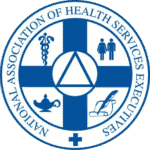In 2020, healthcare recruiters and their healthcare hiring team partners will have to work even harder to attract primary care providers from an increasingly tight labor pool. We know there is a labor shortage of qualified doctors, dentists, advanced practitioners and behavioral health specialists looming, so our proactive efforts to build a pipeline of qualified candidates is more important than it’s ever been.
But by working together, we also know we can achieve the staffing goals of the community healthcare community this year. Having real-time data from providers is imperative for knowing what the market will bear. Understanding the realities will allow community healthcare providers to be strategic in their approach to recruiting and retaining healthcare talent.
Real-Time Data from Healthcare Recruiters
The Internet is filled with salary guides and data on regional numbers. However, having information directly from healthcare recruiters that work in the community healthcare market is simply the most accurate. UHC Solutions interviewed their recruiting team to determine the real-life numbers behind staffing and recruiting for our leading healthcare provider partners. We have three important insights to share about 2020.
Trailing versus future data indicators.
Healthcare hiring teams need to understand that the data at their fingertips isn’t current market data. When looking at NACHC compensation surveys, state association compensation comparisons, 990 tax returns for FQHCs, Indeed, or MGMA statistics, it’s important to recognize this is past data or “trailing indicators.” For example, the 990 FQHC tax returns are one to two years old. This data does not represent the current or future picture of what it will really take to bring top clinical and administrative talent into a community healthcare setting!
Passive versus active candidates.
Most in-house healthcare teams focus on the active candidate. Active candidates are those that are currently on the job market or actively considering a relocation or job change. But healthcare recruiting firms like UHC Solutions never stop networking with the passive healthcare candidate. Passive candidates are not necessarily looking for a new position but might if the right opportunity came along. This nurturing process can take months or even years, particularly with high-value doctors, advanced practitioners or C-suite executives. These passive candidate networks are extremely valuable in the competitive world of healthcare recruiting.
Retention versus new hires.
Having a robust compensation package including salary and benefits not only attracts, but also retains top talent. Paying “just what is necessary” creates flight risk, particularly in the healthcare field where our clinical providers understand the looming talent shortages and their value in the market. They are contacted by recruiters constantly with new opportunities! While you may have valid concerns about increasing the compensation packages for existing employees as well, consider variable incentive plans such as Management by Objective (MBO) or performance bonuses based on key performance indicators (KPIs) as an alternative to higher salary ranges for the entire team. There is nothing wrong with having some skin in the game. Variable bonus plans incentivize teams to perform at their highest levels. The best candidates relish the opportunity to put some of their income “at risk.”
Having data directly from the front lines of healthcare means that your compensation packages can stay current and competitive with what the market will bear. UHC Solutions has the experience and real-time data directly from the FQHC market. We know what it takes to bring top talent into your organization. Contact our leading FQHC recruiters today.





